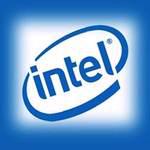 At a recent developer relations event, Intel recently advised the developers to start taking advantage of the touch-based laptops that are up and coming right now.
At a recent developer relations event, Intel recently advised the developers to start taking advantage of the touch-based laptops that are up and coming right now.
We Might See More Windows 8 Apps Thanks To Intel
Intel has been trying to push app development for devices that use their product for a long time. It started with the Linux project that they took on and abandoned and now they are pushing for app development on the upcoming Windows 8 operating system from Microsoft.
Intel has been telling developers to take advantage of the touch-based approach of the coming operating system and the consequent touch-enabled laptops that will be coming out along with the OS.
Even though touchscreen laptops are nothing new, the new platform from Microsoft will make the all the difference. Touch on PCs really needed a shot in the arm and this is mostly likely to be it.
Intel has positioned a special chip for using with Windows 8 based low-power and ultraportable models. The company hopes the app makers will see the opportunity and take advantage of the new age interface and platform that is coming up.
According to Intel, it is also a huge ‘volume opportunity’ because Windows already has the world’s largest install base. So the upgrade numbers would be pretty high. According to the data presented to the developers, the Ultrabooks will account for 40% of all notebooks by the year 2015. So developers are being told to cash in on the opportunity now that they have a heads-up form Intel, the owners of the ultrabook brands.
Ultrabooks so far haven’t really taken off in the market but then we should really wait till Windows 8 is officially out because this form factor was designed for use with Windows 8. Almost every PC manufacturer such as Dell, Toshiba, HP, Samsung, etc. are already hard at work to have models ready by the time Windows 8 is ready to shift. Some of them, like one from Lenovo, have transformable to qualities where the display can lie flat to turn in to a tablet. Lenovo Yoga and Asus Transformer Prime are good examples of this form factor.

